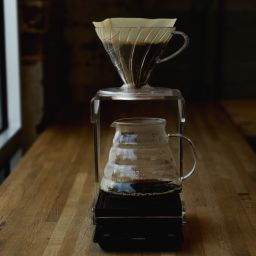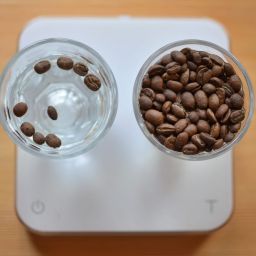
For coffee enthusiasts and aspiring baristas, mastering the skill of milk steaming is a journey towards creating the perfect cup of coffee. In this comprehensive guide, we will delve into the intricacies of steaming milk, from understanding the science behind it to mastering the practical techniques.
Whether you are a beginner or looking to refine your skills, this article will provide valuable insights and tips to elevate your coffee-making artistry.
Understanding Milk Steaming

The Basics of Milk Steaming
Milk steaming, at its core, is the process of heating milk using a steam wand to create a creamy, velvety texture ideal for espresso-based drinks. It involves not just heating the milk but also incorporating air to create the perfect microfoam.
This microfoam is essential for the texture and temperature that coffee aficionados love in their lattes and cappuccinos.
Importance in Coffee Beverages
The role of steamed milk in coffee beverages cannot be overstated. In lattes, the silky foam adds a creamy texture that balances the espresso’s robust flavor.
For cappuccinos, the frothy layer creates a luxurious experience, enhancing both the taste and the visual appeal. The quality of the steamed milk can make or break these classic coffee preparations.
Varieties of Milk and Their Steaming Characteristics
Different types of milk can behave differently when steamed. Whole milk, with its higher fat content, produces rich and creamy foam, making it a popular choice for many baristas. Skim milk, on the other hand, can create a stiffer foam due to its higher protein content but might lack in richness.
Plant-based alternatives like almond or soy milk require a slightly different technique, as their composition varies significantly from cow’s milk.
In summary, understanding the fundamentals of milk steaming is the first step in achieving barista-level quality in coffee preparations. The type of milk used, along with the technique employed, plays a critical role in the outcome.
Equipment Needed for Steaming Milk

Essential Tools for the Task
To steam milk like a professional, certain key pieces of equipment are essential. The primary tool is the steam wand, typically part of an espresso machine. This wand releases steam at high pressure, which is used to heat and froth the milk. It’s crucial for creating the desired texture and temperature in the milk.
The Milk Pitcher: Your Steaming Companion
A milk pitcher, usually made of stainless steel, is another indispensable tool. Its design, with a spout and a handle, allows for precise pouring and control when creating latte art. The size of the pitcher should be chosen based on the amount of milk you intend to steam, with enough room to accommodate the expanding milk foam.
Importance of a Thermometer
While some baristas rely on touch to gauge the milk’s temperature, a thermometer is a valuable tool, especially for beginners. It ensures accuracy in reaching the optimal temperature (usually around 150-155°F) without overheating the milk, which can alter its taste and texture.
Equipped with these tools, you’re well-prepared to start the milk-steaming process. Each plays a critical role in achieving the perfect balance of heat and texture. Next, we’ll explore the science behind milk steaming, shedding light on what happens to milk when it is heated and aerated.
The Science Behind Milk Steaming
The Transformation of Milk Under Heat
Understanding the science behind milk steaming is key to mastering this skill. When milk is heated, its fundamental components – proteins, sugars, and fats – interact in complex ways. Proteins, particularly casein and whey, play a crucial role. As the milk warms, these proteins uncoil and form a network that traps air, creating the foam.
Role of Proteins and Fats
The type of milk greatly influences the steaming process due to its protein and fat content. Fats add richness and creaminess to the foam but can also weigh it down. The proteins are responsible for stabilizing the foam, with different types of milk having varying protein levels which affect the foam’s structure and stability.
Creating the Perfect Microfoam
Microfoam is the goal of milk steaming, characterized by fine, velvety bubbles that blend seamlessly with the coffee. Achieving this texture requires not only the right temperature but also the correct technique in introducing air to the milk.
The ideal temperature range for steaming milk is between 150°F and 155°F. Beyond this range, milk starts to lose its sweetness and proteins begin to break down, leading to a burnt taste and poor foam quality.
In summary, the science of milk steaming is a delicate balance of temperature, technique, and the inherent qualities of the milk. Understanding this interplay is crucial for any coffee enthusiast aiming to perfect their milk-steaming technique.
Also check out our post about how to make the Perfect Espresso.
Step-by-Step Guide to Steaming Milk
Preparing the Milk and Equipment
- Select the Right Milk: Choose your milk based on preference and the type of drink you are making. Whole milk is generally preferred for its richness.
- Fill the Pitcher: Fill your milk pitcher to just below half, allowing room for the milk to expand.
- Purge the Steam Wand: Before inserting it into the milk, briefly turn on the steam wand to remove any condensation or residual milk.
The Process of Steaming
- Positioning the Wand: Submerge the tip of the steam wand just below the milk’s surface at a slight angle. This positioning is crucial for creating a whirlpool effect, which helps incorporate air evenly.
- Introducing Air: Turn on the steam to full power. For the first few seconds, keep the tip close to the surface to introduce air into the milk, creating foam.
- Submerging the Wand: As the milk begins to foam, lower the pitcher gradually to submerge the wand, continuing the whirlpool motion. This step heats the milk uniformly.
- Temperature Monitoring: Use your thermometer to monitor the milk’s temperature. Stop steaming when it reaches around 150°F to 155°F to avoid overheating.
Achieving the Perfect Consistency
- Feel the Pitcher: The pitcher should be hot to the touch but not uncomfortably so. If it’s too hot, the milk is likely overheated.
- Tap and Swirl: After steaming, tap the pitcher on the counter to break any large bubbles and swirl the milk to integrate the foam and liquid.
- Consistency Check: The milk should have a glossy, paint-like texture, indicative of well-steamed milk.
Tips for Perfection
- Practice the Timing: The entire steaming process should take around 20-30 seconds.
- Adjust for Milk Types: Different milks may require slight adjustments in technique, particularly non-dairy alternatives.
- Clean After Use: Always wipe and purge the steam wand after use to prevent milk residue build-up.
This step-by-step guide provides a practical approach to steaming milk, combining the science and art of this process. Up next, we’ll explore common mistakes in milk steaming and how to avoid them, ensuring you achieve the best results every time.
Common Mistakes and How to Avoid Them
Overheating the Milk
- Mistake: Heating the milk beyond 155°F can cause the proteins to break down, resulting in a burnt taste and poor foam quality.
- Avoidance: Always use a thermometer to monitor the temperature and stop heating around 150°F to 155°F.
Incorrect Wand Positioning
- Mistake: Placing the steam wand too deep or not deep enough in the milk can lead to uneven heating and poor foam.
- Avoidance: Keep the wand just below the surface at the beginning to create foam, then submerge it to heat the milk evenly.
Not Cleaning the Equipment Properly
- Mistake: Residual milk in the steam wand can affect the taste and hygiene of your next coffee.
- Avoidance: Always wipe and purge the steam wand after each use to prevent milk residue build-up.
Skipping the Pre-Steaming Ritual
- Mistake: Failing to purge the steam wand before use can introduce water into the milk, affecting the texture.
- Avoidance: Always purge the wand briefly before inserting it into the milk.
Using the Wrong Milk Pitcher
- Mistake: A pitcher that’s too large or too small can make it difficult to control the steaming process.
- Avoidance: Choose a pitcher that’s appropriate for the amount of milk you’re steaming, typically just below half full.
Inconsistent Steaming Technique
- Mistake: Inconsistent technique can lead to variable results.
- Avoidance: Practice consistently to develop a feel for the process, adjusting as needed based on the milk type.
By understanding and avoiding these common mistakes, you can significantly improve your milk-steaming skills. Next, we’ll answer some frequently asked questions in our FAQ section, providing additional insights and tips.
FAQs
Can I steam milk without a professional machine?
Yes, you can use a manual milk frother or even a French press to create foam. While the texture might not be as fine as with a steam wand, it’s a good alternative for home use.
Does the type of milk affect the steaming process?
Absolutely. Whole milk tends to create a creamier foam, while skim milk produces stiffer foam. Plant-based milks require a slightly different technique due to their varied protein and fat content.
How important is the temperature in milk steaming?
Very important. The ideal range is 150°F to 155°F. Overheating milk can cause a burnt taste and destroy the desired creamy texture.
Can I re-steam milk?
It’s not recommended as it can affect the taste and quality of the milk. It’s best to steam only the amount of milk you need.
What’s the key to perfect latte art?
The key is creating smooth, glossy microfoam. The milk should be steamed to the right temperature and consistency, and poured immediately.
How do I clean the steam wand?
After each use, wipe the wand with a damp cloth and purge it by releasing some steam. This prevents milk residue from building up inside the wand.
Conclusion
Mastering the art of milk steaming is a key skill for any coffee enthusiast or aspiring barista. It requires understanding the science behind it, practicing the technique, and learning from common mistakes. With patience and persistence, you can achieve that perfect creamy texture that elevates your coffee beverages.
Remember, each cup of coffee is a chance to refine your skills and impress with your artistry. So, grab your pitcher, fire up the steam wand, and transform your next cup of coffee into a delightful experience. Happy steaming!









